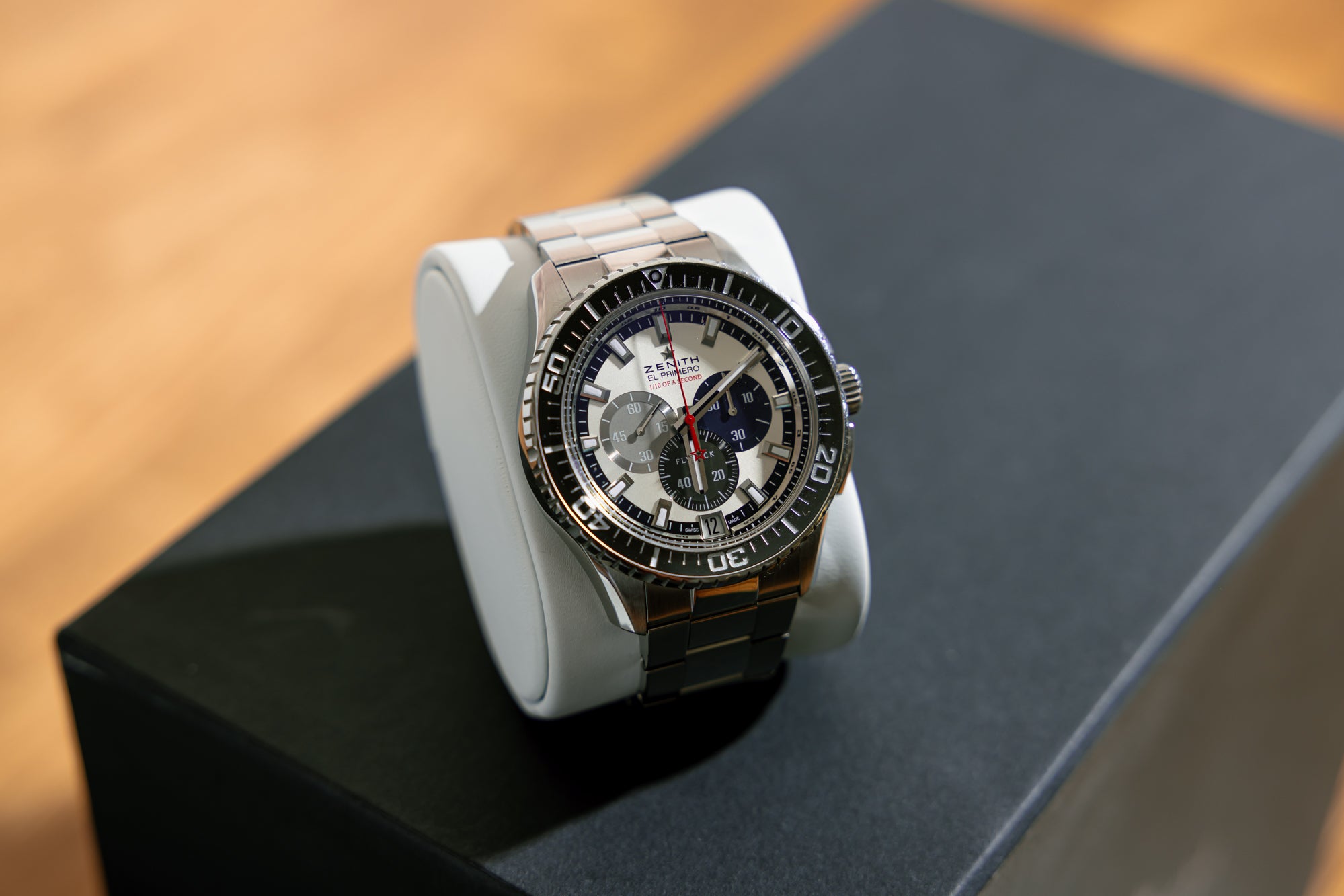It’s not always possible to try a watch on and see it in the metal before buying it, but it’s certainly better if you can. Much of the watch-buying process occurs online, which drives home the importance of brick-and-mortar stores like us here at Charles Martin Watch Company. Even so, a lot of the research process happens at home and can become quite a challenge if brands don’t supply these four essential pieces of information…
Lug-to-Lug
There is an importance to understanding lug-to-lug width and many collectors will be aligned with this sentiment. Lug-to-lug measurements affect how a watch wears on the wrist, not just its diameter alone. Many brands omit this information for reasons unknown. The lug-to-lug width is the measurement from the top of one lug to the end of the other. A 40mm model, for example, can wear larger than a 42mm model if the lug length is larger, especially when combined with case thickness. So, bear in mind that these precious millimeters mean something when you’re comparing models.
Weight
The weight of a watch has nothing to do with knowing its scrap metal value. Weight is a piece of information that should be provided on a spec list because it affects things from a fit and feel point of view. A steel case will weigh more than a titanium one, yet there are several other factors at play. The movement, the glass, and the bezel all add weight to a watch and affect how it wears and feels on the wrist. If more brands provided this information, consumers could make better decisions about the watch they go for, especially if they’re browsing the market for a durable sports watch for lots of physical activity.
Thickness
The thickness of a watch is a pillar measurement that every brand should disclose as part of their spec list, yet not all do. The dominant measurements, as I mentioned earlier, are thickness and lug-to-lug. However, the Holy Trinity of measurements (thickness, width, and weight) is even better. The thickness of a watch will determine whether you can wear it with formal attire and whether it will or will not slide under the cuff of a shirt or jacket. Thinner watches are also more elegant, playing an essential role in deciding between one dress watch and another.
Where The Movement Is Made
The general consensus has always been that an in-house made movement is better than a third-party movement, and while that may be true for the upper echelons of the watchmaking spectrum, less experienced brands have been plagued by the issues associated with their in-house movements. At the end of the day, there is nothing wrong with ETA and Sellita movements. The are tried and tested performers that deliver precisely what they say on the tin. Either way, a collector, particularly a connoisseur, will want to know precisely what that movement is and where it has come from to make an informed choice based on transparency. Those who fail to provide this information may not exactly be doing themselves a favour, since a sketchy spec list is not a good starting point.
If you ever have a question about the size, weight, or another spec detail of a watch you’ve seen here at Charles Martin Watch Company, don’t hesitate to pop us a question by calling us at 01889 560002 or email us on sales@charlesmartinwatchcompany.com.


0 comments